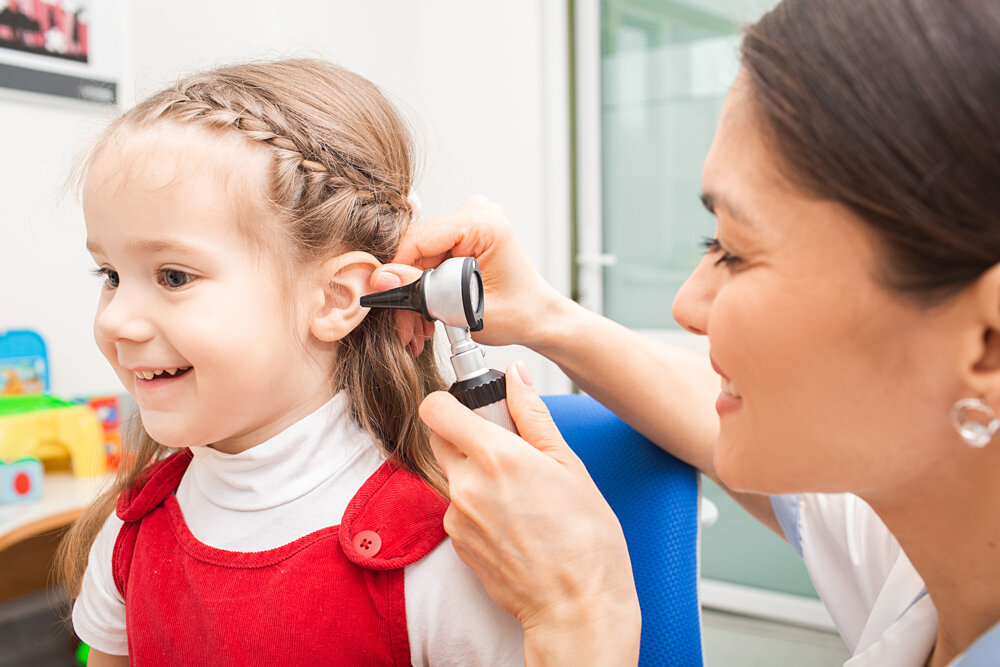
Paediatric ENT
Hearing loss and ear infections
There are many causes for hearing loss in children. This can present with poor attention, speech delay and behavioural issues. It is important to have children with suspected hearing loss assessed with a hearing test and if confirmed, an ENT surgeon.
The most common cause of hearing loss in children is “glue ear”. This is where fluid accumulates behind the ear drum. This fluid may resolve spontaneously, however if it persists then the usual recommendation is for grommet insertion.
Ear infections are common in young children. Usually they are in the form of middle ear infections otherwise known as acute otitis media. These often present with an irritable child, ear pain, tugging at the ears, fever and even discharge from the ear if the infection ruptures the ear drum. Often the GP will note that the ear drum looks red. These episodes are treated with antibiotics, however if a child has recurrent episodes the grommet insertion can be considered.
Grommets
A grommet (Ventilation Tube) is a small tube that is inserted after a small cut (Myringotomy) is made in the eardrum. Grommets allow air to pass from the ear canal into the middle ear and help to equalise the pressure on each side of the eardrum. They usually stay in for 6-12 months and fall out on their own.
Snoring and Obstructive Sleep Apnoea
Snoring and obstructive sleep apnoea (OSA) both represent some form of upper airway obstruction while asleep. Soft snoring is common in children and usually is not problematic. Loud, constant snoring can represent an increased work of breathing while asleep and can lead to disrupted sleep patterns. OSA is the more severe end of the spectrum and usually presents with loud snoring, irregular breathing patterns, choking episodes and apnoeas (temporary cessation of breathing). Often these children are tired during the day, require naps regularly and have poor concentration. Left untreated OSA can cause long term brain, heart and lung problems.
In the vast majority of cases, heavy snoring and OSA can be effectively treated by the removal of the child’s adenoids and tonsils.
Tonsillitis
Tonsillitis can occur in people of any age. Usually they present with a very sore throat, difficulty swallowing and fevers. They can be due to viral (e.g. Glandular fever) or bacterial infections. Occasionally patients can develop complications from this such as a quinsy. If patients suffer from multiple episodes of tonsillitis then removal with a tonsillectomy can be considered.
Tonsils
The tonsils are situated in the throat, one on each side. They are part of the lymph system and help fight infection when you are a young child. After the age of about two years, the tonsils become less important in fighting infection and usually shrink. Your body can still fight infection without them. The two most common reasons for removing the tonsils are:
- Recurrent infection (tonsillitis)
- Tonsil enlargement causing snoring and breathing difficulties while sleeping (sleep apnoea)
Adenoids
The adenoids are made up of the same type of tissue as the tonsils and serve the same purpose. They are situated in the back of the nose and therefore lie above the level of the tonsils. They usually decrease in size during childhood. If enlarged, they can cause blockage of breathing through the nose and increased rates of ear infections due to glue ear.

